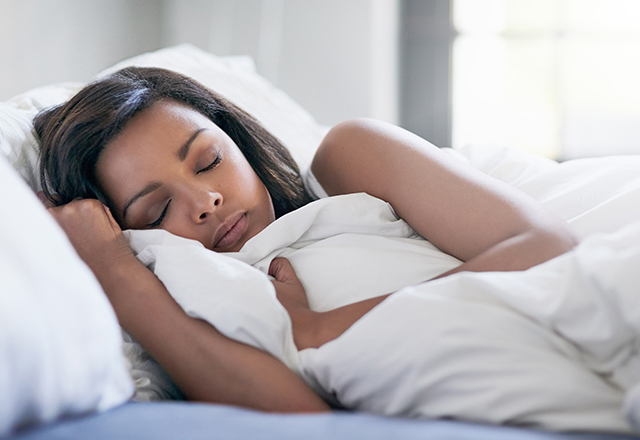Do you find yourself waking up tired, or maybe with a headache or dry mouth? Obstructive sleep apnea could be to blame. This happens when your breathing is interrupted during sleep, often for more than ten seconds.

When you sleep, your muscles relax, including the throat and chest muscles that help you breathe. If you have sleep apnea, relaxation of throat muscles combine with a narrowed airway to interrupt breathing.
At-home sleep apnea testing is an easy, cost-effective way to figure out whether you’re having trouble breathing, says Susheel P. Patil, MD, PhD, clinical director of the Johns Hopkins Sleep Medicine Program. A home sleep apnea test is a very simplified breathing monitor that tracks your breathing, oxygen levels, and breathing effort while worn. It does not fully capture what is monitored with an overnight sleep study.
Overnight sleep studies give a more thorough assessment of sleep issues. They are attended by a sleep technologist and capture many more signals, including brainwaves for sleep, muscle tone, and leg movements. For individuals with certain heart, breathing, or neuromuscular problems, an overnight sleep study at a sleep center may be better.
You get it, you do it, you throw it away. ❤💪😴#safetesting #hometest #sleeptest #sleepapnea #lifechanging #healthysleep #heartstrongsleep https://t.co/IdXtxj2cno
— Heartstrong Sleep (@heartstrongzzzz) December 6, 2020
“If you are being told that you snore, snort and gasp, if you have disrupted sleep or are sleepy during the day, and you are overweight or obese, an at-home sleep apnea test may be very appropriate. Talk with your clinical provider about your options.,” Patil says.
Sound familiar? You could have obstructive sleep apnea. Here’s what to know about the test.
-
They monitor breathing, not actual sleep.
“A sleep test is meant to evaluate a patient for sleep apnea, and it monitors breathing parameters, not the sleep itself,” Patil says. The sleep test won’t analyze how long you’re in light or deep sleep, for instance. Instead, it will measure pauses in and absence of breathing, how much effort it takes to breathe and whether your breathing is shallow.
-
In the past, you needed a prescription.
This is no longer the case. You can purchase a home sleep test without a physician prescription. However, you'll need a physician to read the results and prescribe therapy, if necessary.
-
It uses sensors to detect breathing patterns.
The sensors include a small probe over your finger that measures oxygen levels. You’ll insert another mask with tubes into your nostrils and secure it around your ears, similar to an oxygen mask. Other sensors are placed on your abdomen and chest to measure their rise and fall as you breathe.
-
It’s a small commitment.
Most at-home sleep tests are used just for one night. It’s also less expensive than a sleep study in a clinic, says Patil. “It’s usually a third to a fifth of the cost of doing an in-lab study, and it’s typically covered by insurance,” he says.
-
It’s convenient.
With an at-home study, you’ll be in the comfort of your own surroundings, which could offer a more accurate reading of how you actually sleep, Patil says.
-
It doesn’t completely rule out apnea.
After the test, your results will be reviewed by a sleep technologist and sent to your physician. If symptoms persist, your physician might recommend an in-lab study. Home tests can sometimes be inaccurate: For instance, your sensors might fall off during the night. At a lab, a physician is on-site to monitor you.
-
You might have other sleep issues.
Not all sleep disorders are caused by breathing trouble. If your symptoms persist, you might not have apnea. Other common sleep issues that don’t affect the airways include movement disorders that cause nighttime restlessness or narcolepsy, a neurological disorder that affects the body’s sleep-wake cycles and causes excessive sleepiness. Your physician can work with you to pinpoint the cause.
Heartstrong Sleep :: All-Inclusive Home Sleep Test



















![[subscription]](http://heartstrongsleep.com/cdn/shop/files/Group_30_6a2ee5b7-7d1a-49f1-855d-428a7cb5358f.png?v=1733846466&width=600)
















